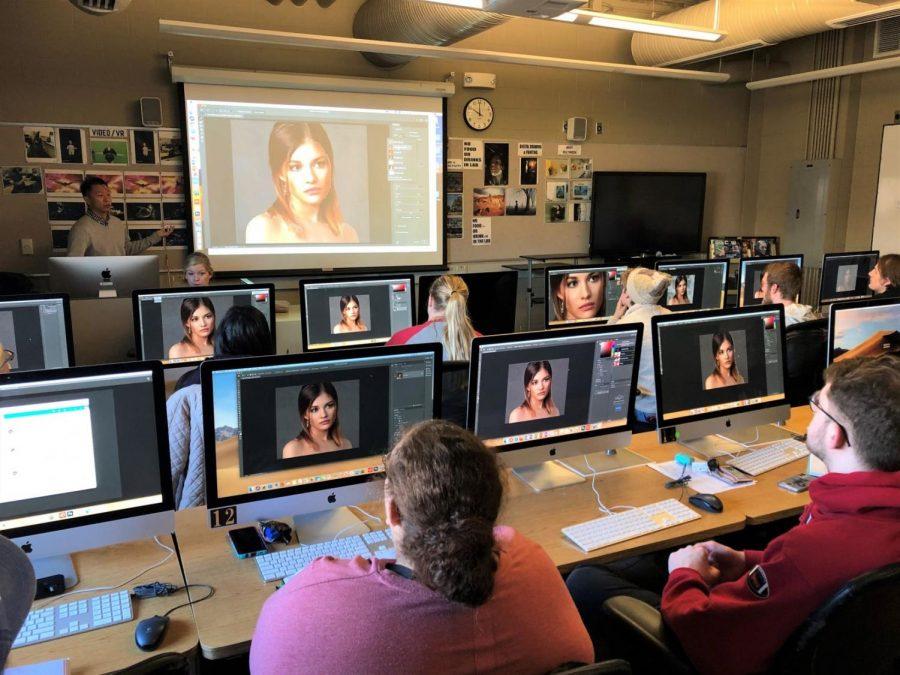About a Major: BFA graphic design
January 28, 2020
The bachelor of fine arts degree program is designed for people who want to pursue art in many mediums, one of which is graphic design. The program includes all of the general education requirements that every major faces, along with long hours, faculty-critiqued projects and a focus on career marketability.
“People usually imagine an artifact, a tangible object they can hold, but graphic design is not about making things look pretty,” said assistant professor of graphic design Wonjae Lee. “Graphic design is organization and presentation of information or even a concept developed through a creative process for a particular function.”
This process of conception and organization is taught from the lowest level courses to the upper level classes making up the graphic design major.
“Learning techniques is easy, but the freshmen and sophomores haven’t learned this terminology yet,” said Lee, “So I push them to use those terms and make sure they can explain things to clients or other people by using the graphic design terminology.”
Senior graphic design major Morgan Roberts remembers her time in the freshman classes and has since gained more specific knowledge and experience in the field.
“With the art department, you have to get an internship sometime during your degree seeking time,” said Roberts, “and I did mine last spring with the hockey team in town, which is where I learned I want to do sports graphics.”
Like Roberts, many graphic designers go on to create promotional material and manage social media for clients. Beyond this, a graphic design degree can allow people to find jobs as programmers, entrepreneurs, web designers and more.
Obtaining a degree of this value comes at no less difficulty than any other major.
“Art classes are almost four hours long,” said Roberts. “They’re long classes. Freshman year, people would tell me I had a 4.0 because I’m an art major and art is easy. But in reality, I was sitting in the art building all day working on my stuff.”
Assistant professor Lee spoke on how important it is for graphic design students and professionals to learn and engage in the business and customer service side of things.
“The user experience study is a hot topic,” said Lee. “Even in developing a software, we’re always concerned about the general public. Previously, if you were the one operating the software or the machine, that was it. There was no real interaction between the designer and the consumer, and now it’s different.”
If you’re interested in a graphic design degree or are already on your way to obtaining one, heed this advice from Roberts.
“My usual day, when art focused, I’ll be at school from nine in the morning to four in the afternoon, then I go to work for an hour,” said Roberts. “I’m also the mac lab monitor from seven to ten. It’s a lot of time management and making it all work. Asking a senior what classes to take and what order to take them in is phenomenally helpful.”
Edited by Adam White, Jason Morrison



